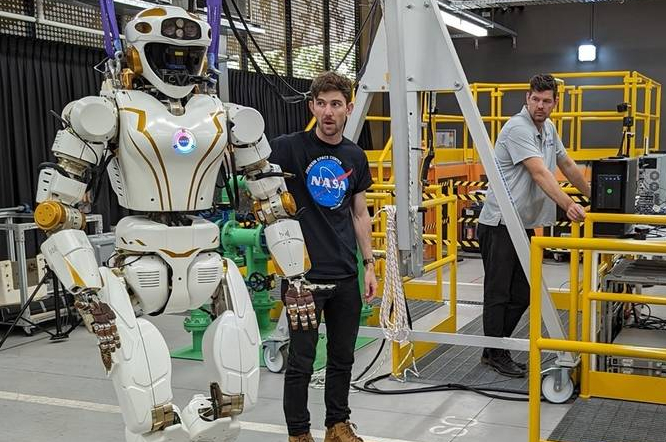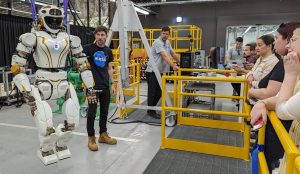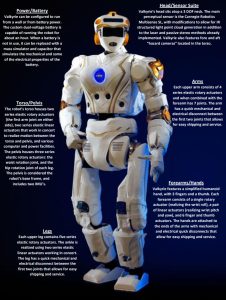
It is part of a research-sharing Space Act Agreement, explains the space agency, which plans to use a Valkyrie robot to develop remote mobile dexterous manipulation capabilities, for remote caretaking of uncrewed and offshore energy facilities. Woodside Energy will test the resulting software and provide data and feedback to NASA, helping the maturation of the robotic technology.
“We are pleased to be starting the next phase of development and testing of advanced robotic systems that have the potential to positively impact life on Earth by allowing safer operations in hazardous environments,” said Shaun Azimi, lead of the dexterous robotics team at NASA Johnson.
“These demonstrations will evaluate the current potential of advanced robots to extend the reach of humans and help humanity explore and work safely anywhere.”
The robot is designed to be both “robust” and “rugged”, says Nasa – hence the name taken from Norse mythology – and capable of operating in degraded or damaged human-engineered environments.
Nasa foresees remotely operated mobile robots on the lunar and Martian surface, which could enable Earth-based operators to carry out important activities, even if astronauts are not physically present. For example, the inspection and maintenance of infrastructure and “plants that leverage resources and materials to produce new items”. Basically, helping astronauts to live off the hostile land.
Woodside’s testing will also provide generally useful data for NASA engineers on the use of advanced robots in similar terrestrial applications, hopes the agency.
 Valkyrie
Valkyrie
NASA’s Valkyrie was designed and built by the Johnson Space Center (JSC) Engineering Directorate to compete in the 2013 DARPA Robotics Challenge (DRC) Trials.
Building on prior experience from designing Robonaut 2, the JSC Valkyrie team designed and built the robot within a 15 month period, implementing improved electronics, actuators and sensing capability from earlier generations of JSC humanoid robots. It was based on two Intel Core i7 processors, and measured 6 feet 2 inches.
You can read more here.
Pictured above are the Woodside Energy team receiving orientation and training from Woodside trainer Harley Pritchard with NASA support from Alex Sowell and Misha Savchenko.
Image: NASA/JSC
See also: Leonardo to develop Nasa’s infrared sensors to find habitable planets


 Valkyrie
Valkyrie




